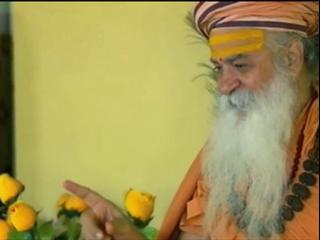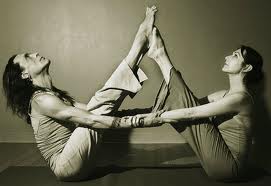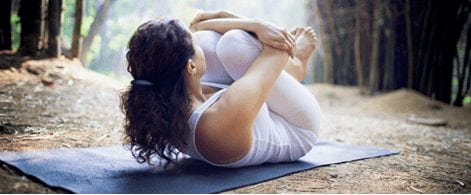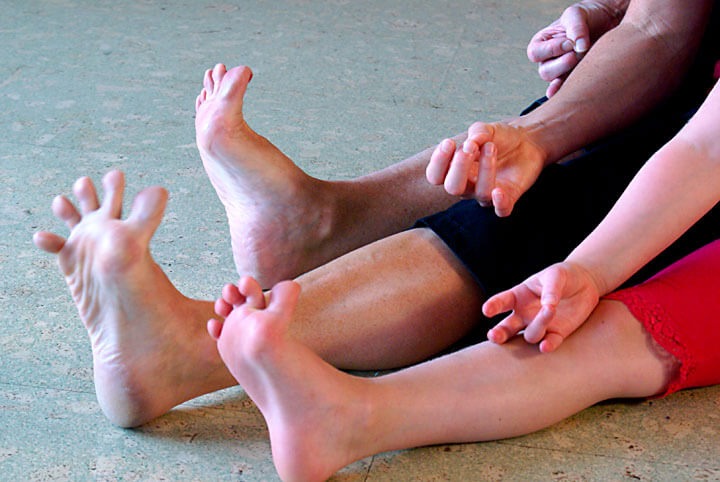 So there I was, 30 minutes into class and I’m already sweating profusely. My elevated breathing had started my irregular heart off on a crazy jungle beat. This had set my very un-calm mind off worrying, seriously regretting that I forgot to mention ‘arrhythmia’ on the health form. Ah, the joys of Bikram yoga! Even with my general mantra of try anything twice and once more just for luck, I can’t say this was the most fun I’ve ever had, and six hours later, whilst still cultivating those embarrassing sweat patches beneath my underarms, I can’t say test driving hot sweaty yoga before a friend’s wedding was one of my finest choices to date. Still, we live and learn.
So there I was, 30 minutes into class and I’m already sweating profusely. My elevated breathing had started my irregular heart off on a crazy jungle beat. This had set my very un-calm mind off worrying, seriously regretting that I forgot to mention ‘arrhythmia’ on the health form. Ah, the joys of Bikram yoga! Even with my general mantra of try anything twice and once more just for luck, I can’t say this was the most fun I’ve ever had, and six hours later, whilst still cultivating those embarrassing sweat patches beneath my underarms, I can’t say test driving hot sweaty yoga before a friend’s wedding was one of my finest choices to date. Still, we live and learn.
But that’s not to say that it’s not for others. In fact, despite having tried it again with similar results, I would still encourage anyone (in relatively good health) to give it a go! The same could be said for all types of yoga, as for all types of movement. It shouldn’t be seen that one style is right and another wrong, but more along the lines of what works for you and what just doesn’t.
The yogic segregation goes back as far as the sutras and for thousands of years, great and wise yogis have been calmly and mindfully arguing over whose interpretation is best.
We only have to look at Krishnamacharya and his two most famous students, BKS Iyengar and Sri Pattabi Jois. One guru, two different interpretations to his teachings. So maybe it’s time to accept one another’s differences, respect our choices and remember the old yogic saying, ‘There is always more than one way to skin a cat.’

I consider myself fortunate. My line of work not only enables me, but encourages me, to experience as many types of yoga and as many styles of teaching as possible. I am also blessed that through this I have found myself a student in classes led by some of the world’s finest teachers. I guess for me, I find my greatest experiences have been less about the person leading the class, and more about how open and present I am at the time. That’s not to say that a great teacher is not important. It really is, but there’s no point me jumping into a class with someone great, unless I’m ready to jump in with both feet, fully committed to the experience.
I’ll take you back to a time when I was less fortunate to indulge my point. I was living somewhere I did not want to be, working a job I had no love left for any more, and working through a few personal issues that just needed a little consideration and what turned out to be a lot of ‘lightening up’. So as suggested, I went looking for some yoga.
Mo’s yoga class was held in the back room of a sports centre’s cafe area. The smell of chip fat mingled with the fluorescent bulbed ambience, and the lack of windows intensified the smells of sweat and deep fat friers. Despite that, to this day, I could not have asked for a better, more appropriate yoga experience. The gentle hatha yoga was exactly what I needed right there, delivered precisely as prescribed, and the constant injection of humor from ‘the rebels’ at the back of the class, was a perfect balance to my severe lack of balance within the asanas.
These days I prefer my yoga a little more physically challenging, but still with a twinkle of that humour snuck into my wobbly vrikshasana or an injection of lightness as I shake my asana through a down dog.
A friend of mine once told me of the time she signed up for a week long course with a great and respected ashtanga teacher. This teacher had been studying ashtanga for many years and had gained such a reputation that my friend travelled a good old distance just to experience her take on this dynamic and disciplined yoga. Well, as it turned out, the teacher was not as young as she used to be and her take on ashtanga’s dynamic and strong approach was more of a steady dip into the realms of pranayama and gentle hatha yoga. We all have different needs for different times in our lives.

David Life & Sharon Gannon
If we look back to yoga’s first introductions to the west, it was used prescriptively. Yogis would suggest asanas or pranayamas for each individual’s needs, depending on their condition or physical and mental constitution. I guess the same goes for our choices today. Gentle hatha can give that respite from busy times and develop awareness in each breath and posture, whilst Iyengar’s alignment focused, multi-propped approach can develop patience, strength and a beautifully balanced body. Good old sweaty power yoga, or other dynamic yoga styles, are certainly popular with those just looking for a strong workout, but be warned – that esoteric, spirituality might just sneak up on you whilst you’re busy flowing through your vinyasas. I’m a big fan of all things Jivamukti. For me it’s the perfect balance of physical, spiritual and fun, but I know its tattooed, musically grooving veganism is not everybody’s favorite form of tofu.
So what’s your prescription? Let’s have a look and I’ll do my best to throw a few suggestions out there.
Slow movement teaches patience, presence, control of both body and mind. Fast movement challenges body control and teaches us an appreciation for ourselves within space. Strong and gymnastic styles may be knocked for taking yoga too far from its origins, but developing a sense of your body’s limitations is a very important lesson in these current times, where we want it all now, via the easiest route purchasable. I can certainly vouch for an increased perception of success and failure every time I happily put my gymnastic trained body into an arm balance and then follow it with possibly the most tight-hipped version of a yogic squat grimmace known to any previous owner of under stretched adductors. There is also a great deal of time in my yogic embrace for the traditional. It’s here that we can discover the benefits of discipline and structure. Yet letting yourself go into a free flowing class or a musically uplifting vinyasa can really unite you with the space around you, or elevate and connect your prana to something beyond yourself.
Firstly, I would recommend a realistic observation as to where your body is at physically, and let’s make it an honest one. I assure you, you will not find any joy or spiritual advancement in attempting padamasana (lotus), when your knees are twisting and your hips are screaming at you! Remember, everybody starts exactly where they are and it’s often understanding and accepting where we are that makes the best progress in moving forward.

It’s worth assessing where your mind is too. What do you need? What are you ready for? A week long silent meditation retreat could be a week of the darkest hell if you’re new to meditating, or if you’re the kind of person who hangs around the coffee machine at work, delivering the latest hot office gossip. It’s all about keeping it real, being honest with yourself and simply enjoying each step along the path. Don’t be afraid to ask around. Ask questions, experiment. Ask friends, ask teachers, and ask to trial classes. A lot of studios offer deals for new practitioners so take advantage of that, and sample as many classes as you can. Remember an experience of one particular style of yoga can be vastly different to exactly the same style with another teacher. So try a few and find a teacher you can connect, or relate to. Over time you might see your practice evolving, and your needs changing.

Be realistic with your lifestyle too. How will your new yogic aspirations fit in with your day to day life? Can you find a space in your schedule or even a space in your home to accommodate this? Then ask yourself, is this enough? These days, juggling a hectic job and bringing up a family is challenging enough. Jois stated that family was the 7th series. I like that. Sometimes, for me, it’s enough.
So what is right and what is wrong? And what is right and wrong for you? And of course, when is it right and wrong for you? The more we open ourselves to experience, the more we begin to understand that it’s all about what works for the individual. Whatever lights your fire, right now, or however the spirit moves you. But don’t worry – it’s all pathways to the same destination and trees grown from the same seed. After all, we are one big yoga family. We are one.
Jamie has recently released a Pilates flow DVD with music by Moby and proceeds going to charity. The DVD features a mixture of classical and contemporary exercises that allows you to build on the principles of alignment and centering and is designed to get you moving and having some fun.
The workout is a great progression for those already with some Pilates experience, looking to challenge themselves further.
About the instructor: Jamie Isaac |
 Jamie enjoys many aspects of the fitness and exercise profession, but his passion is Pilates (closely followed by surfing!) Jamie is currently teaching workshops all over the world, including weeks in Bali, the USA, England and Fuerteventura. A former international trampolinist and a graduate in Physical Education and Sports Sciences, Jamie practices and teaches Pilates as more than just a set of physical exercises. By incorporating body and mind he finds the classic Pilates method benefits all aspects of life. Jamie enjoys passing on his knowledge of Pilates, helping others to relax and progress, and teaching in specialist areas such as injury rehabilitation, specialist referral and coaching other sports professionals and enthusiasts. Jamie is the founder of Azul Yoga & Pilates Retreat and Fluid Art Pilates. Jamie enjoys many aspects of the fitness and exercise profession, but his passion is Pilates (closely followed by surfing!) Jamie is currently teaching workshops all over the world, including weeks in Bali, the USA, England and Fuerteventura. A former international trampolinist and a graduate in Physical Education and Sports Sciences, Jamie practices and teaches Pilates as more than just a set of physical exercises. By incorporating body and mind he finds the classic Pilates method benefits all aspects of life. Jamie enjoys passing on his knowledge of Pilates, helping others to relax and progress, and teaching in specialist areas such as injury rehabilitation, specialist referral and coaching other sports professionals and enthusiasts. Jamie is the founder of Azul Yoga & Pilates Retreat and Fluid Art Pilates. |